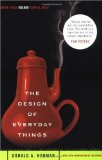The (Bad) Design of Everyday Things (Part 2)
Categories: Design
Recent trends in bathroom design. Often seen in hotels, but increasingly so in residences. Put style ahead of usability, longevity and maintainability. Here are some observations, i.e. a rant, from a recent hotel stay in Lisbon.
Bath and sink plugs with ‘fancy’ mechanisms
What could go wrong with a plug? make it rigid, i.e. cool looking crome, and fit an o-ring to make the seal. Or, construct it from a more flexible platic so it forms it’s own seal. Prevent it from going walkies with a short length of chain. Job done. This simple design has worked for at least a hundred years.
The problem is, it’s not neat. At least not from an architect or designers viewpoint. It isn’t integrated, smooth, flush, nice. So, the integrated plug, in a variety of designs, has been fashioned. Some use a pushrod situated behind the tap, just where you can’t see it. Many baths have the plug mechanism fitted to the fancy chrome cover for the bath overflow. You must rotate the bath overflow cover to close the plug. What!? Where did that idea come from. Reminds me of the “he doesn’t know how to use the shells [snigger]” from the film Demolition Man when Stallone’s character needs toilet paper.
Once you do figure out where the plug closing control is situated, you push and pull, then push and pull it again. You have to do this ritual, because you have no idea which way closes the plug. Nothing intuitive tells you which way it is. Often pushing down on the control pops the plug up, but I this isn’t guaranteed. Add to this, the fact that the amount of plug movement is often so small, that you can’t tell if you’ve moved it the right way. This limited movement - the lack of feedback, may have been part of a bad design, or could just be that the under-specified linkages have bent. Give a human being a control to interact with and you’d better make sure it’s designed to take a lot of abuse because at some stage some idiot is going to exert enough force to damage it in some manner. The design, materials, and build quality are never up to scratch. I’ve lost count of the number of bathrooms where the only way to let the water out is to remove the plug with fingernails, a penknife or a sharp key. Then, the only way to stop it closing again is to pull the whole thing out of the plug hole, and leave it for the chambermaids to ‘fix’ the next morning.
As a final insult added to injury is the fact that even during the short timespan that these plugs actually work, they never drain as a traditional plug on a chain. I tend to be a bit grossed out if I spit my toothpaste dregs into a sink, and have to watch it swirl around for 2 minutes before it eventually disappears down the hole. But maybe I’m alone on this one.
What is the solution? First, stick to a method of control that is blindingly obvious. A plug on a chain is one example. A lever can work too, but make it feel like you are directly controlling the plug (that rules out the woolly feeling pneumatic ones), and give visual feedback by making the plug move a decent distance.

If you are involved in interactive design in any way - be it shower heads or software, then ‘The Design of Everyday Things’ is a must read. Click the image to buy from Amazon.co.uk.
Comments